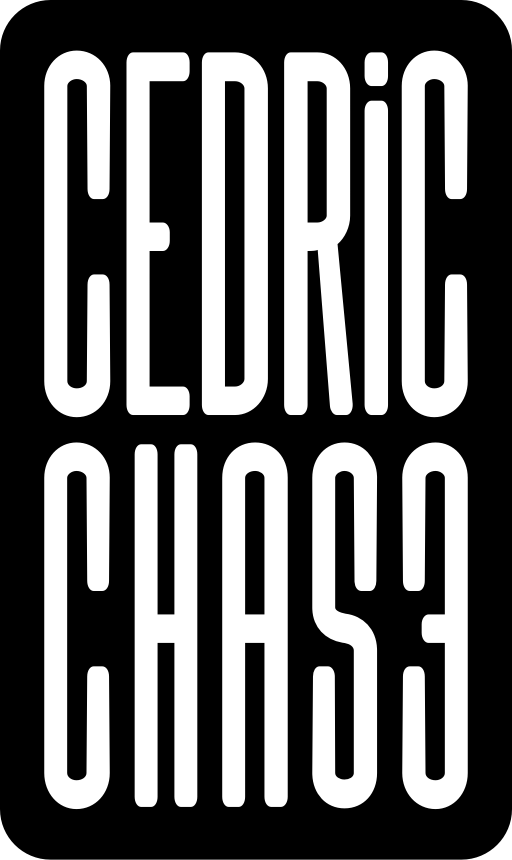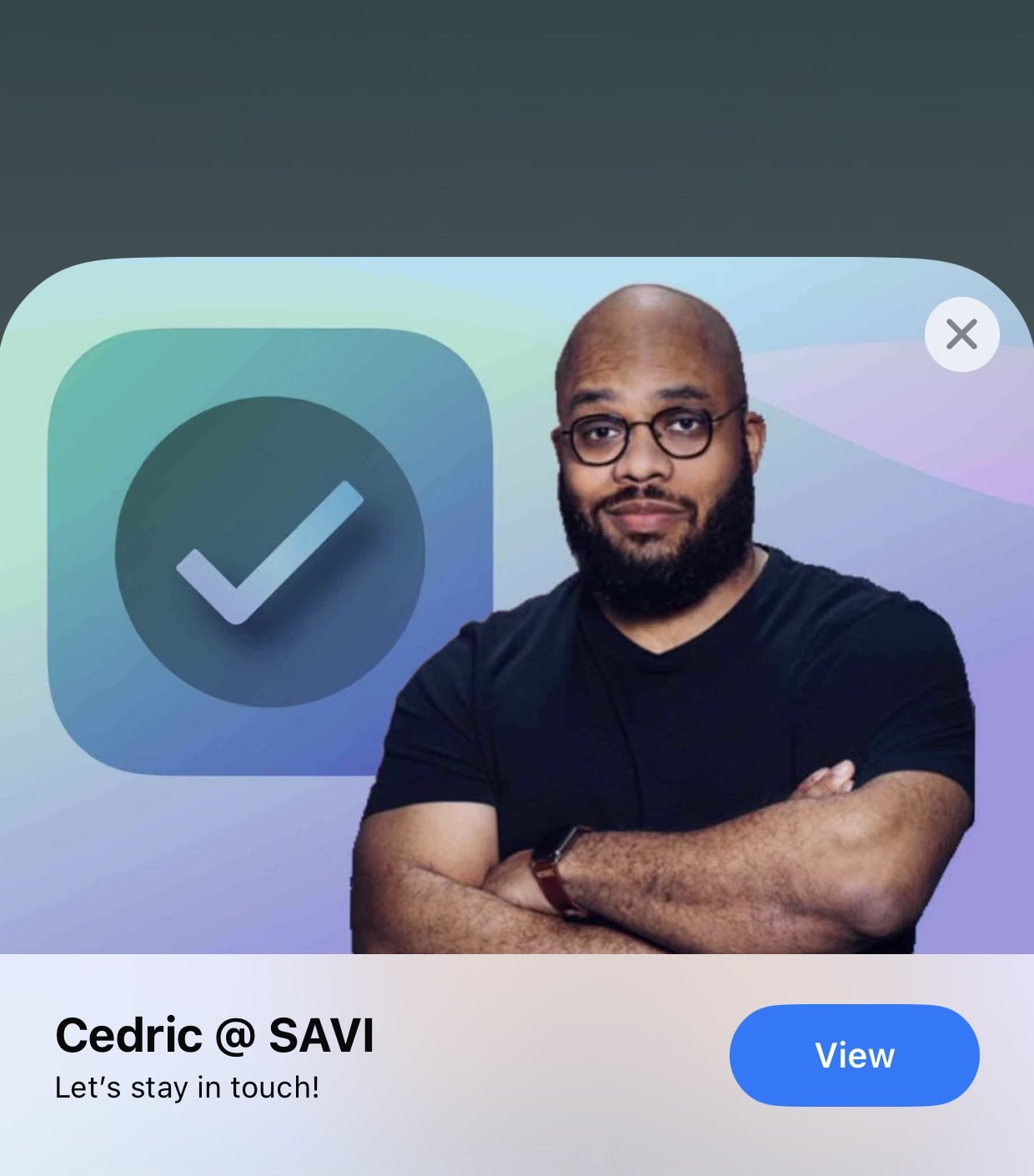From Paper to Pixels
Thoughts on Digital Business Cards
These days everything is digital. Everything is ‘in the cloud’, instant access, always-on. From commerce to communication, technology has forever transformed the way we interact and conduct business, and that transformation is ongoing. In what I’ve called the “Digital Experience Marketing Era” we often assume that the latest innovations are inherently better; however, not every digital trend lives up to its promises.
Popl's rich push-notifications on iOS, pretty neat.
Enter the digital business card - a modernized replacement for its “old school” paper counterpart. When taking a closer look at this seemingly convenient solution it’s easy to spot a few major drawbacks. I did some research and eventually landed on Popl (www.popl.co) as my digital business card of choice, chosen primarily for it’s sleek design, ease of switching between multiple profiles, their support for rich push notifications and live-activities on iOS, and some cool auto-response workflows they’ve got built in. Other offerings like Dot, Blinq, Haystack, and Linq have similar offerings with slightly different approaches and integrations. The most important thing for me was that the digital card look sleek and professional, and that I have support for both NFC and QR codes.
At the time of this writing, I’ve had my digital business card set up for a few months, and thus far my favorite way to share my info is with Popl’s NFC bracelet. I can wear it all the time, and when I want to share my contact info, I “simply’ have my new acquaintance tap their phone on a spot on the bracelet and boom - my info pops right up! I was able to experiment with this many times at InfoComm this past week in Orlando, FL, and while the process sounds simple enough, well…
As it turns out - exchanging digital business cards is actually slower than handing out the real life, old timey paper variety.
In order to swap digital cards with a new contact, you’ve got to first make sure they’ve got NFC activated on their phone - if they’ve got an iPhone, this is easy (kinda) since background NFC reading is enabled by default on all iPhones from the XR (2018) and up. Of course, in the Android world, things are a bit more complicated. IF the device has NFC reading capabilities, it would first need to be manually activated in Settings. As you can imagine, this whole process is cumbersome and awkwardly slow, especially for a quick meet and greet where swapping cards and a simple handshake would suffice. This clumsy process is why I made sure to have both NFC and QR code options, as you can always fall back to using the camera to grab a QR code link - for older devices or when NFC simply isn’t cooperating.
The real nail in the coffin is coming this fall, where the entire “digital business card industry” is about to be shaken up with the release of iOS 17 for iPhones. To be included in this update is an enhancement to Apple’s AirDrop feature - cleverly coined “NameDrop” - which will enable instant swapping of contact info by simply bringing two iPhones close together (anyone remember bumping with the Bump app? This will effectively Sherlock most of these digital business card companies, or a least erase a large portion of their current and future iPhone owning clientele - which I imagine is a huge percentage of their businesses. If these companies want to survive, they’ll put more focus into integrations with CRMs like Salesforce and analytics. But really, who cares how many times someone scanned my NFC business card?
Undoubtedly, saving trees and the convenience of not carrying physical cards at all times are essential factors worth considering. These valid points highlight the utility of digital cards as valuable companions to their physical counterparts - but not wholesale replacements.
Physical business cards have a distinct aura about them, don’t they?
The visceral nature of being handed a business card is an experience that transcends the digital realm. In a world increasingly dominated by virtual exchanges and on-screen interactions, the tangible act of receiving a physical card holds a unique and surprisingly profound significance. When you extend your hand to offer or receive a business card, a connection is being established that goes beyond the simple exchange of contact information. It's a moment of real human interaction, a gesture of trust, and an invitation to forge a real-world connection. The precisely rounded corners, soft-touch finish, the substantial weight of the card, raised spot-gloss accents, carefully selected typefaces and color palette, and all of the other design elements (joyfully describing my own business cards, here) all contribute to the sensory experience, leaving a lasting impression that far exceeds that of a simple exchange of data.
In that instant, a paper business card becomes more than just a piece of information; it embodies the individual and organization it represents. The choice of colors, fonts, and imagery not only communicates a brand or personal identity, if done well, it also evokes emotions and sets the tone for potential future interactions. The physicality of the card also creates a sense of permanence, as it finds its place in your wallet, purse, or on your desk - a lovely little tangible reminder of the encounter.
Business on the front, party on the back?
I may have gone a bit American Psycho there, but I think just about anyone can relate. I have yet to see a digital business card solution replicate the ‘business card exchange experience’ in a meaningful way. Despite the (potential?) convenience of modern digital alternatives, there’s a difficult to define charm in the tactile nature of the old school paper cards.
One thing I’m just now realizing I haven’t mentioned is the hybrid approach: Simply slap a QR code on the back of a typical business card. If you know me, you know one of my favorite sayings is “in my opinion, this is objectively ugly”… QR codes, such an eyesore, right? The information density of a QR code containing the amount of data for a typical contact (first name, last name, multiple numbers, email address, web URL, etc.) requires that it be pretty large to be scannable, potentially taking up 50% or more of the area of a standard 3.5”x2” card. The aesthetics of this are of course hideous.
Once the code is scanned (which is also hit or miss, depending on your phone’s camera quality, lighting, distance, etc.), it does make adding the information on the card to my phone’s contact list pretty simple and straightforward though, so perhaps there is some merit to this method.
Maybe this is all just my subconscious crying out and rebelling against an Apple Vision Pro based VR Zoom call virtual trade show augmented reality experience all-digital-all-the-time future.
🤷🏾♂️
Disclaimer: No AI was used in the writing of this blog post. Blog art created with the help of MidJourney.





